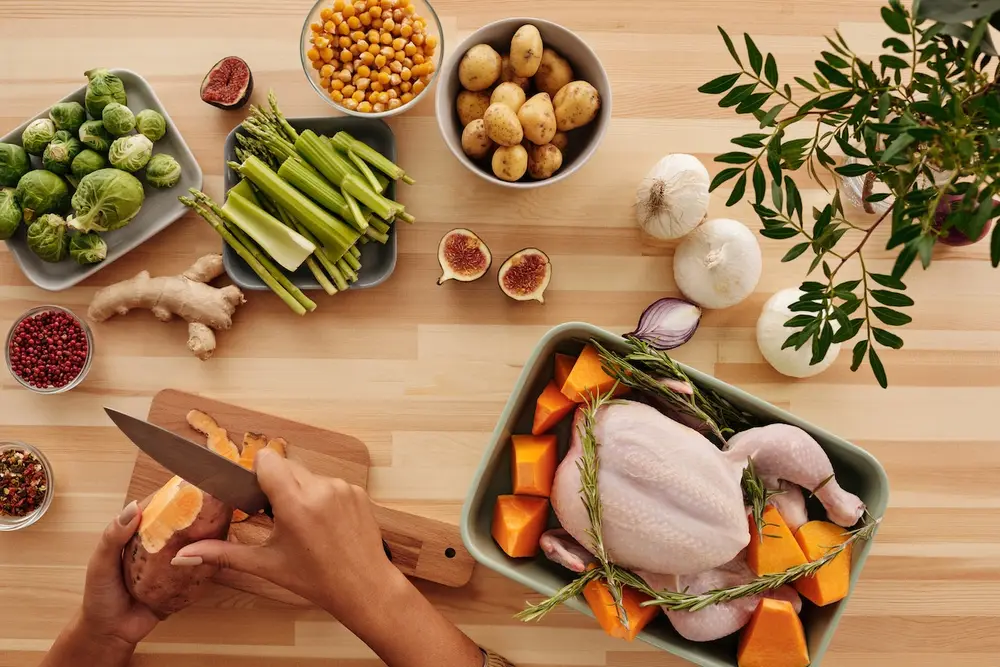There are many ways to be kind to the environment, starting with active decisions to be more sustainable. Small actions can make a significant difference in the betterment of the planet. The heart of the home is in the kitchen, so start there and explore some eco-friendly kitchen ideas that can help you on your sustainability journey.
A Greener Environment
Sustainable wellness practices ensure your body, mind and emotional needs are met while you work towards becoming the best version of yourself. Sustainable wellness shows your body the respect it deserves and promotes overall health and well-being. Studies show such an environment can help you live a healthier lifestyle. Incorporating individual well-being can help improve the well-being of the environment by paving the way for a greener living.
Many activities can help you on your journey to sustainable wellness. Mindfulness exercises, connecting with nature and personal growth can nurture your sense of self and position you on your path to sustainable wellness.
Understanding sustainable health can help you contribute to a greener environment and be more united with your surroundings. You can indulge in delicious meals and still be kind to the environment with eco-friendly kitchen ideas promoting a greener lifestyle. Consuming organic foods can support your body and the environment. Eating organic fruits, vegetables, and produce supports organic farming practices — practices that are more sustainable than conventional methods of farming.
Cooking Methods for a Greener Kitchen
If you want an eco-friendly kitchen, you can purchase some sustainable kitchen products to reduce your carbon footprint, but here are some other ideas. These tips can help you take care of Mother Nature and improve the sustainability of your house.
1. Use the Right Size Burner
Using the right burner can mitigate the heat you waste using the wrong size while cooking. A small pan on a big burner uses more heat than you need to cook your food, going into the air rather than your sustainable kitchen products. So, be mindful of the pans you place on the size of the burners and try to match them the best you can.
2. Take Advantage of Lids While Cooking
Ensure you place the lid on your pots and pans while you cook so you don’t use up extra heat. When you waste energy, you waste money. Lids help what you’re preparing get hot faster because it traps the warmth rather than letting it escape.
Try to leave the lids on your cookware and see how much time and electricity you can save. There are times when leaving the cover off is best, but you can often leave the lids on while your food cooks.
3. Let Leftovers Cool
Leftovers that go straight into the refrigerator can make your fridge work overtime to cool down the food, making power usage skyrocket as it works hard to do its job. Let your leftovers cool on the counter for at least 30 minutes before storing them in the fridge to reduce electricity waste.
4. Limit Oven Preheating
Try to only warm up your oven for the time it needs to reach the temperature your recipe needs. Starting to cook your food in an oven before it preheats can drastically cut your energy usage. Remember to keep the oven door shut as you cook so you don’t let heat escape while you cook and waste energy.
5. Start From Scratch
Cooking from scratch can save you significantly on your budget and help you contribute to a greener environment. It uses fresh ingredients that aren’t processed or frozen, which can limit air miles from food distribution and reduce losing taste or quality from reheating.
You also have the upper hand since you know exactly what is going into the food you’re preparing. Growing your own fruits, vegetables and herbs also help you take a step further in your sustainability journey and reduces your carbon footprint.
6. Use a Crock Pot
Who doesn’t love a good crock pot meal? These handy appliances can help you prepare food in a more environmentally friendly way, which makes them one of the most sustainable kitchen products. Slow cooking can save you tons of electricity since it gradually cooks your food, reducing energy consumption.
7. Warm Water With an Electric Kettle
Heating water in an electric kettle rather than boiling water on a stovetop can significantly decrease power usage. Kettles are actually faster at heating water than a pan on the stove. You can use the electric kettle for tea to make rice, pasta, steamed veggies or whatever else you need boiling water for. Just heat your water in a kettle and then pour it into a pan to save energy.
Making a Greener Kitchen in Your Home
Every step towards eco-friendliness counts, from practicing a minimalist lifestyle to making small changes toward a greener environment by reducing your use of plastic. Start your sustainability journey in your eco-friendly kitchen and utilize these fantastic eco-friendly kitchen ideas to help reduce your carbon footprint and make the world a greener place.






